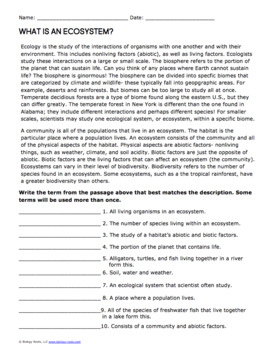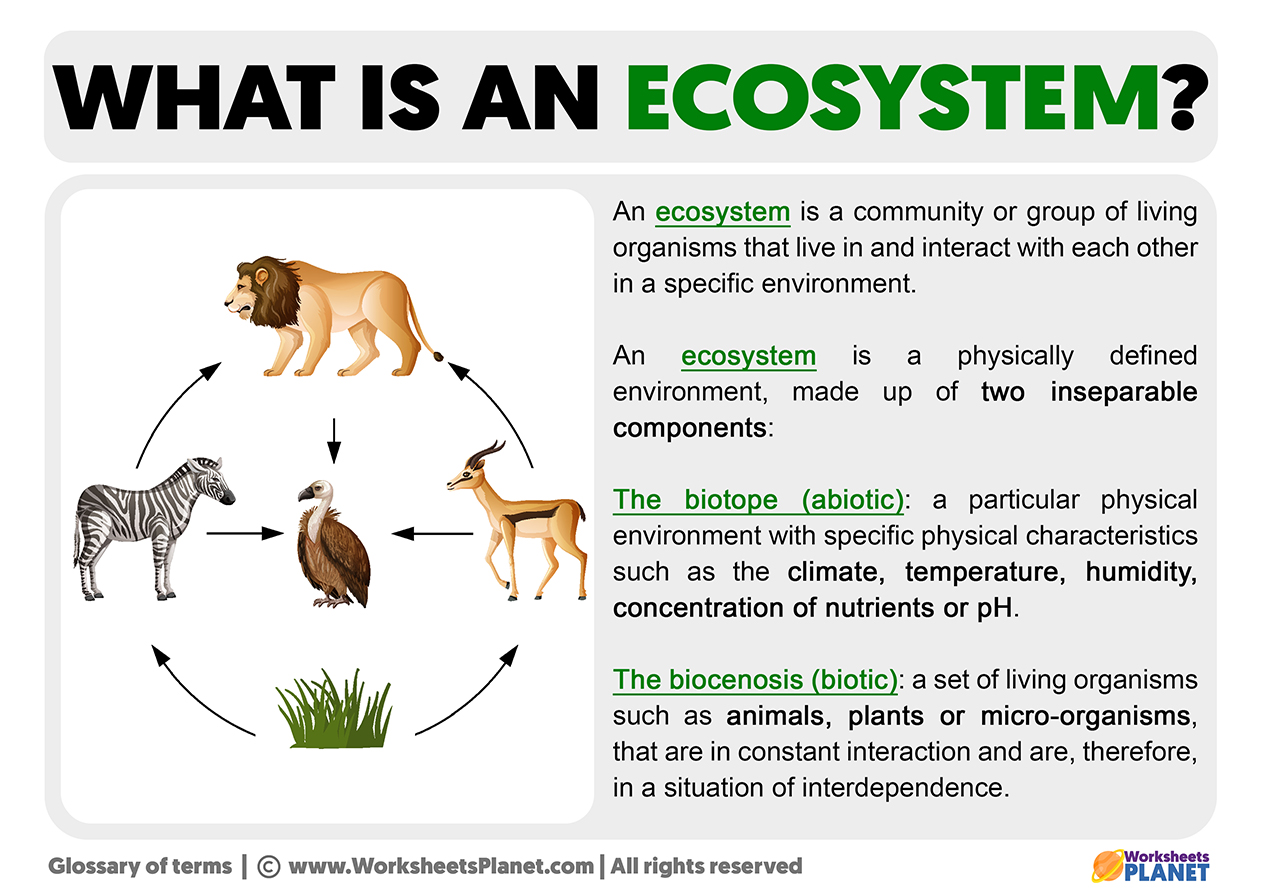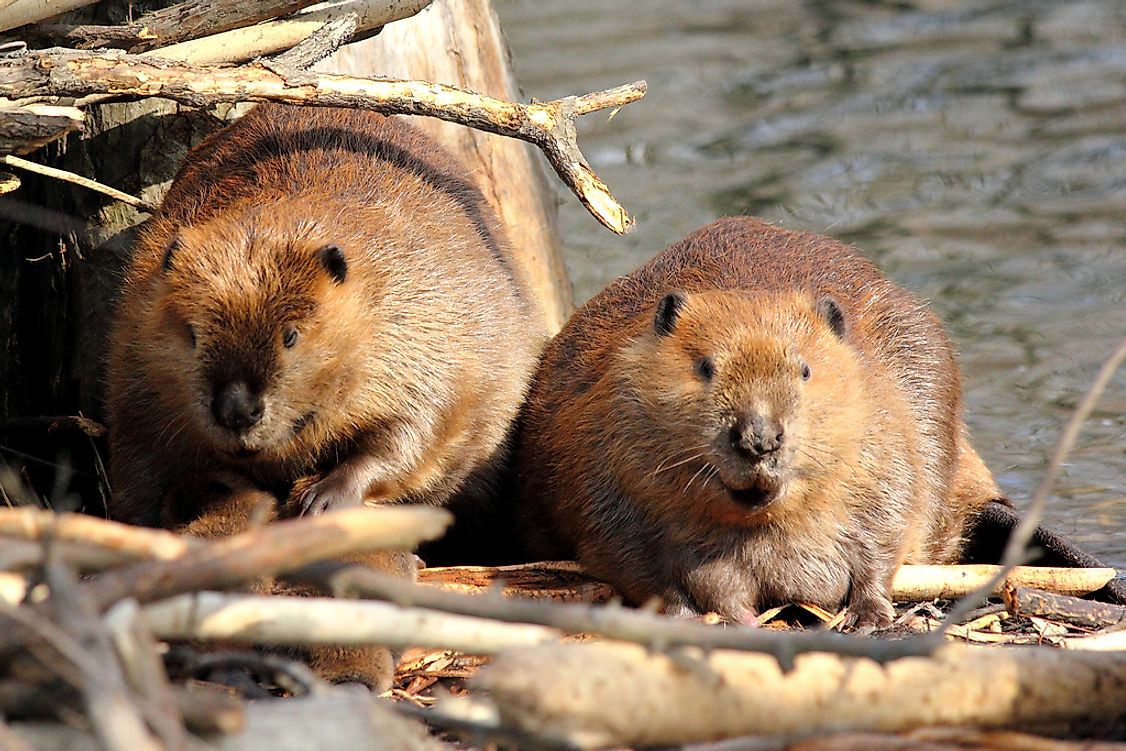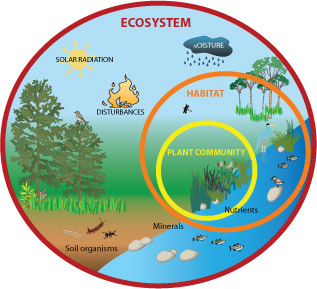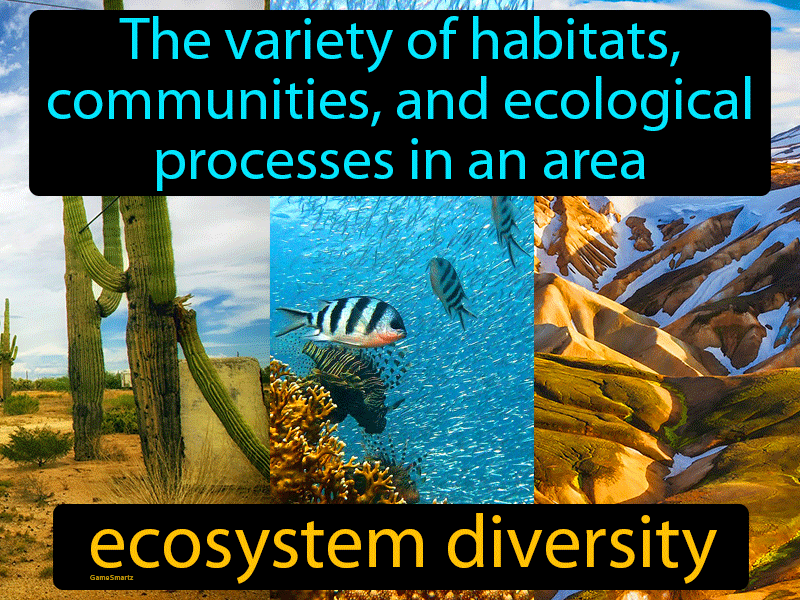Topic definition of the ecosystem: Explore the essence of ecosystems, where life interconnects in a delicate balance, shaping our planet"s biodiversity and sustaining our existence.
Table of Content
- What is the definition of the ecosystem?
- What is an Ecosystem?
- Types of Ecosystems: Aquatic, Terrestrial, and Artificial
- Components of an Ecosystem: Biotic and Abiotic Factors
- The Role of Energy Flow and Nutrient Cycles
- Importance of Ecosystems: Biodiversity and Human Dependence
- YOUTUBE: What Is An Ecosystem
- Threats to Ecosystems: Pollution, Habitat Loss, and Climate Change
- Ecosystem Conservation and Restoration Efforts
- Case Studies: Successes in Ecosystem Management
- Future Challenges and Opportunities in Ecosystem Science
What is the definition of the ecosystem?
An ecosystem can be defined as:
- A geographic area where plants, animals, and other organisms exist
- These organisms interact with each other and their surrounding environment
- This interaction forms a complex web of relationships
- The ecosystem includes both living organisms and non-living elements like air, water, and soil
READ MORE:
What is an Ecosystem?
An ecosystem is a complex network of living organisms and the physical environment with which they interact. It encompasses all the living beings in a particular area, from tiny microorganisms to large mammals, and the natural resources they use, such as air, water, and soil. Ecosystems are characterized by the intricate relationships and dependencies between their biotic (living) and abiotic (non-living) components.
- Biotic Components: These include all living organisms within the ecosystem, from plants and animals to fungi and bacteria. Each organism plays a specific role, contributing to the ecosystem"s overall health and functionality.
- Abiotic Components: These are the non-living parts of an ecosystem, such as sunlight, temperature, water, and soil. They provide the essential conditions for life and influence the living organisms" survival and reproduction.
Ecosystems can be as vast as a rainforest, encompassing a wide variety of species and extensive geographical areas, or as small as a puddle, housing a limited number of species in a compact space. Regardless of their size, ecosystems are vital for maintaining biodiversity, ensuring the survival of species, and providing services essential to human life, such as clean air, water, and fertile soil for agriculture.

Types of Ecosystems: Aquatic, Terrestrial, and Artificial
Ecosystems are categorized based on their environments and the interactions that define them. Each type supports diverse forms of life, adapted to their specific conditions. Here, we explore the primary categories: Aquatic, Terrestrial, and Artificial ecosystems.
- Aquatic Ecosystems: These are water-based ecosystems, subdivided into freshwater (lakes, rivers, ponds, and streams) and marine (oceans, seas, coral reefs, and estuaries) ecosystems. Aquatic ecosystems are crucial for supporting a vast array of life, regulating water cycles, and providing resources for human use.
- Terrestrial Ecosystems: Found on land, these ecosystems range from forests and grasslands to deserts and tundra. Each has distinct climates and supports a unique set of flora and fauna. Terrestrial ecosystems play a vital role in producing oxygen, sequestering carbon, and forming the basis of food chains.
- Artificial Ecosystems: These are human-made environments designed to mimic natural ecosystems for specific purposes, such as urban parks, gardens, and agricultural lands. While not naturally occurring, artificial ecosystems are important for biodiversity conservation, providing habitats for various species within human-dominated landscapes.
Understanding these ecosystem types helps in appreciating the diversity of life on Earth and the importance of conserving these natural habitats to ensure the sustainability of our planet.
Components of an Ecosystem: Biotic and Abiotic Factors
The complexity and functionality of ecosystems are determined by the interaction between their biotic and abiotic components. These elements work together to create a balanced environment that supports various forms of life. Understanding these components is essential to appreciate how ecosystems operate and the importance of each in maintaining ecological balance.
- Biotic Factors: These are the living components of an ecosystem, including all organisms such as plants, animals, fungi, and microorganisms. Biotic factors are categorized into producers (autotrophs), consumers (heterotrophs), and decomposers (detritivores), each playing a critical role in nutrient cycles and energy flow within the ecosystem.
- Abiotic Factors: The non-living components that influence the ecosystem"s structure and survival of living organisms. Abiotic factors include sunlight, temperature, water, atmospheric gases, soil, and minerals. These elements determine the conditions under which the biotic components can live, grow, and reproduce.
Together, biotic and abiotic factors form a dynamic and interdependent system that sustains life. Changes in either component can have significant impacts on the ecosystem"s overall health and its ability to support life.

The Role of Energy Flow and Nutrient Cycles
The sustainability of any ecosystem depends on the continuous flow of energy and the recycling of nutrients. These processes are fundamental to ecosystem dynamics, supporting life and maintaining ecological balance.
- Energy Flow: Energy in ecosystems flows in a one-way stream, primarily from the sun, through producers (plants that convert solar energy into chemical energy via photosynthesis), to consumers (animals and organisms that eat the producers), and finally to decomposers (organisms that break down dead matter, returning nutrients to the soil). This flow of energy is crucial for the survival of organisms within the ecosystem.
- Nutrient Cycles: Nutrients such as carbon, nitrogen, and phosphorus cycle through ecosystems in complex loops, moving between the biotic and abiotic components. These cycles ensure that nutrients are reused and made available to sustain life. For example, the carbon cycle involves the exchange of carbon between the atmosphere and living organisms, while the nitrogen cycle involves processes that convert atmospheric nitrogen into forms usable by living organisms.
Understanding the roles of energy flow and nutrient cycles is essential for grasping how ecosystems function and the importance of conserving these natural processes to ensure the longevity and health of our planet"s ecosystems.
Importance of Ecosystems: Biodiversity and Human Dependence
Ecosystems play a pivotal role in maintaining the balance and health of our planet. They are not just natural habitats for various species but also provide essential services that humans rely on for survival. The significance of ecosystems can be understood through two primary aspects: biodiversity and human dependence.
Biodiversity within Ecosystems
Biodiversity refers to the variety of life in all its forms, levels, and combinations, including ecosystem diversity, species diversity, and genetic diversity. This diversity within ecosystems contributes to resilience and stability, enabling ecosystems to withstand and recover from disturbances such as natural disasters and human-induced impacts.
- Genetic Diversity: Ensures species adaptability to changes in environmental conditions and threats such as diseases.
- Species Diversity: Leads to complex interdependent relationships that support ecosystem functions such as pollination, seed dispersal, and nutrient cycling.
- Ecosystem Diversity: Offers a variety of habitats that cater to different species and human needs, from forests and oceans to freshwater systems.
Human Dependence on Ecosystems
Humans depend on ecosystems for their very survival and well-being. Ecosystems provide a host of services often referred to as ecosystem services, which include provisioning, regulating, cultural, and supporting services.
- Provisioning Services: Include the supply of food, fresh water, wood, fiber, and genetic resources.
- Regulating Services: Such as climate regulation, disease control, water purification, and pollination.
- Cultural Services: Offer aesthetic, spiritual, educational, and recreational benefits that contribute to human culture and quality of life.
- Supporting Services: Such as soil formation, photosynthesis, and nutrient cycling, which underpin all other ecosystem services.
The intricate connections between biodiversity and human well-being highlight the critical need to preserve ecosystems. Healthy ecosystems contribute to climate stability, protect against natural disasters, and ensure the availability of natural resources. Moreover, they play a crucial role in carbon sequestration, helping to mitigate the effects of climate change. The preservation of ecosystems is not just a matter of environmental conservation, but a necessity for economic sustainability, human health, and future generations" survival.
Conclusion
Understanding the importance of ecosystems in terms of biodiversity and human dependence is essential for promoting sustainable practices and policies that protect these vital systems. By recognizing the intrinsic value and services provided by ecosystems, we can work towards a more sustainable and harmonious coexistence with the natural world.
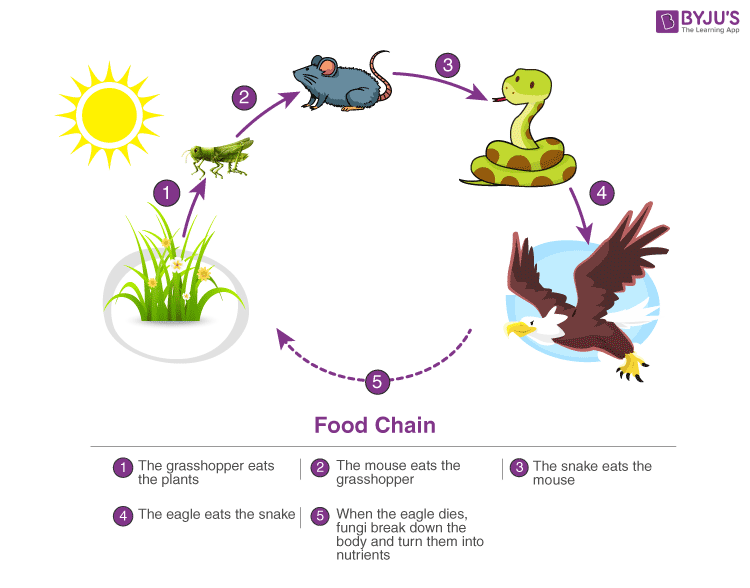
What Is An Ecosystem
Interconnected: Dive into the fascinating world of interconnected ecosystems where every living organism plays a vital role. Discover the intricate web of life and the beauty of nature’s harmonious balance in our captivating video. Environment: Immerse yourself in the breathtaking beauty of our planet\'s diverse environments and learn about the importance of preserving and protecting our natural world. Join us in exploring the wonders of the environment in this enlightening video.
Ecosystem Definition
See here, the definitions of the word ecosystem, as video and text. (Click show more below.) ecosystem (noun) A system formed ...
Threats to Ecosystems: Pollution, Habitat Loss, and Climate Change
Ecosystems around the world face significant threats that disrupt their balance, leading to loss of biodiversity and the degradation of services they provide to humanity and the planet. Key threats include pollution, habitat loss, and climate change, each contributing to the declining health and resilience of ecosystems.
Pollution
Pollution, in its many forms, poses a severe threat to ecosystems. It can originate from agricultural runoff, industrial discharges, plastic waste, and air pollutants, among other sources. These pollutants can contaminate water, soil, and air, leading to adverse effects on both aquatic and terrestrial life forms.
- Water Pollution: Affects the quality of freshwater and marine ecosystems, leading to toxic environments for fish, amphibians, and invertebrates.
- Soil Contamination: Alters the natural composition of soil, affecting plant growth and the organisms that depend on them.
- Air Pollution: Causes harm to both flora and fauna, and contributes to acid rain that further degrades ecosystems.
Habitat Loss
Habitat loss is primarily driven by human activities such as deforestation, urbanization, and agricultural expansion. The conversion of natural landscapes into urban or agricultural areas not only reduces the available habitat for wildlife but also fragments ecosystems, making it difficult for species to migrate, find food, or reproduce.
- Deforestation: Leads to the loss of forest ecosystems, which are rich in biodiversity.
- Urbanization: Results in the conversion of natural habitats into cities and towns, disrupting local ecosystems.
- Agricultural Expansion: Often involves the clearing of natural habitats to make way for crops or livestock, reducing the area available for native species.
Climate Change
Climate change is perhaps the most pervasive threat to ecosystems globally. Rising temperatures, changing precipitation patterns, and more frequent and severe weather events affect ecosystems in various ways:
- Temperature Changes: Can lead to shifts in species distribution and disrupt the timing of breeding or flowering, affecting the entire ecosystem.
- Sea Level Rise: Threatens coastal ecosystems like mangroves and coral reefs, which protect coastlines and support marine biodiversity.
- Extreme Weather Events: Such as hurricanes, floods, and droughts can devastate ecosystems, leading to long-term damage.
Addressing these threats requires concerted global efforts to reduce pollution, protect and restore habitats, and mitigate the effects of climate change. By understanding and acting on these challenges, we can safeguard the health and diversity of ecosystems around the world.
Ecosystem Conservation and Restoration Efforts
The conservation and restoration of ecosystems are critical to maintaining biodiversity, supporting human livelihoods, and combating climate change. These efforts involve a range of strategies aimed at protecting existing ecosystems, restoring degraded areas, and enhancing the resilience of natural habitats.
Conservation Strategies
Conservation efforts focus on protecting ecosystems from further degradation and preserving the diversity of life within them. This includes:
- Protected Areas: Establishing national parks, wildlife reserves, and marine protected areas to safeguard habitats and species.
- Legislation: Enacting laws and regulations to protect endangered species and critical habitats from exploitation and destruction.
- Community Engagement: Involving local communities in conservation activities, recognizing their traditional knowledge and stake in the natural resources.
- Sustainable Practices: Promoting sustainable land and water use practices to minimize human impact on ecosystems.
Restoration Initiatives
Restoration efforts aim to return degraded ecosystems to their original state or to enhance their capacity to provide ecosystem services. Key initiatives include:
- Reforestation: Planting trees to rebuild forest ecosystems, increase carbon sequestration, and restore wildlife habitats.
- Wetland Restoration: Re-establishing wetland areas to improve water quality, enhance biodiversity, and provide flood protection.
- Remediation: Cleaning up polluted areas, such as toxic waste sites, to remove contaminants and restore land and water quality.
- Species Reintroduction: Reintroducing native species to areas where they have been extirpated or extinct to restore ecological balance.
Enhancing Resilience
Building the resilience of ecosystems to withstand the impacts of climate change and human pressures is essential for their long-term sustainability. This involves:
- Climate Adaptation Measures: Implementing strategies to help ecosystems adapt to changing climate conditions, such as creating wildlife corridors to facilitate species migration.
- Integrated Management: Adopting holistic management approaches that consider the entire ecosystem, including human activities, to ensure sustainable use of resources.
- Ecosystem-based Management: Utilizing natural solutions, such as mangrove restoration for coastal protection, to address environmental challenges while enhancing ecosystem services.
Conservation and restoration efforts are essential for the well-being of the planet and all its inhabitants. By safeguarding ecosystems, we preserve not only the biodiversity and beauty of the natural world but also the critical services it provides to humanity.

Case Studies: Successes in Ecosystem Management
Ecosystem management is a complex and multifaceted field that involves balancing conservation, restoration, and sustainable use of natural resources. Several case studies around the world highlight successful strategies and approaches to ecosystem management, demonstrating positive outcomes for biodiversity, local communities, and overall ecosystem health.
Reforestation Efforts in Costa Rica
Costa Rica"s national reforestation program is a leading example of successful ecosystem management. By implementing policies that incentivize tree planting and sustainable forestry practices, the country has reversed its high deforestation rates, leading to significant recovery of its forest ecosystems. This has not only enhanced biodiversity but also boosted eco-tourism and local economies.
Community-based Conservation in Kenya
In Kenya, the Maasai community has been involved in wildlife conservation efforts through the establishment of conservancies. These conservancies balance the needs of wildlife with those of the local community, promoting sustainable land use and providing a source of income through tourism. The initiative has led to the protection of large areas of savannah ecosystems and the wildlife they support.
Wetland Restoration in the Florida Everglades
The Comprehensive Everglades Restoration Plan (CERP) is an ambitious effort to restore the natural hydrology of the Florida Everglades. This large-scale project aims to improve water flow, remove pollutants, and restore habitats within this unique wetland ecosystem. Early results have shown improvements in water quality and increases in populations of native species.
Marine Protected Areas in the Great Barrier Reef
The Great Barrier Reef Marine Park in Australia is one of the largest and most well-known marine protected areas in the world. Through a combination of zoning, management plans, and community involvement, the park aims to conserve the diverse marine life of the reef while allowing sustainable use by industries such as fishing and tourism. The efforts have led to better protection of the reef"s biodiversity and improved resilience to threats such as coral bleaching.
These case studies illustrate the potential for successful ecosystem management through a combination of scientific understanding, policy-making, community involvement, and sustainable practices. By learning from these examples, we can continue to improve our approaches to conserving and restoring ecosystems around the globe.
READ MORE:
Future Challenges and Opportunities in Ecosystem Science
Ecosystem science stands at a critical juncture, facing numerous challenges but also benefiting from unprecedented opportunities for advancement and application. Addressing these challenges and leveraging these opportunities is essential for the sustainable management and conservation of global ecosystems.
Challenges in Ecosystem Science
The field of ecosystem science must navigate a complex array of challenges that include:
- Climate Change: Understanding and predicting the impacts of climate change on ecosystems is a daunting task, given the complexity and variability of natural systems.
- Biodiversity Loss: The rapid loss of species and habitats poses a significant challenge to maintaining ecosystem functions and services.
- Anthropogenic Pressures: Human activities such as deforestation, urbanization, and pollution continue to stress ecosystems, requiring innovative management strategies.
- Data Limitations: Comprehensive, high-quality data are essential for ecosystem research, but such data are often lacking, particularly in remote or under-studied areas.
- Transdisciplinary Approaches: Effectively addressing ecosystem challenges requires integrating knowledge from diverse disciplines, which can be difficult to achieve in practice.
Opportunities in Ecosystem Science
Despite these challenges, there are significant opportunities for ecosystem science to make a positive impact, including:
- Technological Advances: New technologies such as remote sensing, bioinformatics, and artificial intelligence offer powerful tools for monitoring, understanding, and managing ecosystems.
- Collaborative Networks: Increasing collaboration among scientists, policymakers, and local communities can enhance the relevance and application of research findings.
- Restoration Ecology: There is growing interest and investment in ecosystem restoration as a strategy for combating climate change, conserving biodiversity, and enhancing human well-being.
- Policy Integration: Integrating ecosystem science into policy and decision-making can lead to more effective and sustainable management of natural resources.
- Public Engagement: Increasing public awareness and involvement in ecosystem conservation can foster a culture of stewardship and support for conservation initiatives.
The future of ecosystem science will be shaped by how well the community can address these challenges and seize these opportunities. By fostering innovation, collaboration, and a deep commitment to sustainability, ecosystem science can contribute to the health and resilience of our planet for future generations.
Exploring the definition of ecosystems unravels the intricate web of life and its profound impact on our planet, offering valuable insights for sustainable living and conservation efforts.


